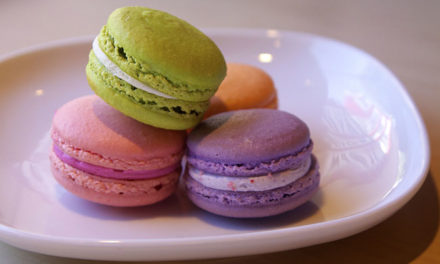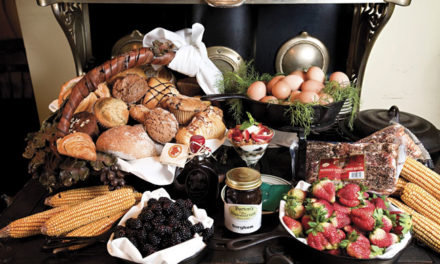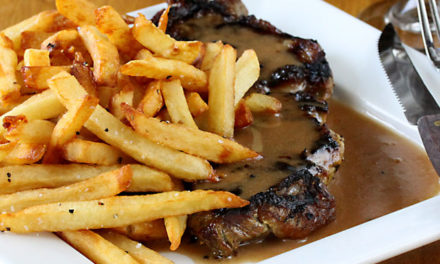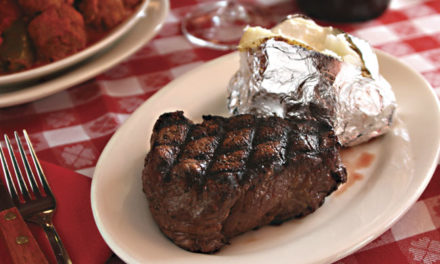
Editor’s note: The following is a column written by contributor Christine Barbour for the April/May 2009 issue of Bloom.
by CHRISTINE BARBOUR
For a brief and shining moment—a short four seasons—we lived in an Indiana morel patch. Every spring, like clockwork, the elusive fungi would appear in our yard, scattered across it like a miniature, honeycombed army on the march. Under the old pine tree there were gray morels and out in the sunny spaces beyond there were fat yellow ones. They appeared within a few days of each other in April, early or late depending on the rains, and usually at around the same time the first asparagus spears were poking their tightly budded, purple heads out of the just-warming soil. Oh, did we feast on spring.
When I first moved to Indiana from the East Coast in the 1970s, the only mushrooms I had ever heard of were the pale and insipid button variety—pleasant enough in a sauce, maybe, or battered and fried, but really uninspiring overall. But the Hoosiers I met were crazy about mushrooms.
They would “hunt” them in spring, abuzz with excitement, pathologically silent about their destinations, almost cult-like in their devotion to this odd yearly ritual. Mushroom hunting? I pictured them taking aim with shotguns and blowing their tiny targets away. The local paper would print a picture of some monstrous fungus of award-winning size, pockmarked—I imagined, with buckshot—dirty and, really, not very appetizing. All I knew about wild mushrooms was that they could be deadly and it was easy to believe that these specimens could poison a small town. I confess, I did not see what the fuss was about.
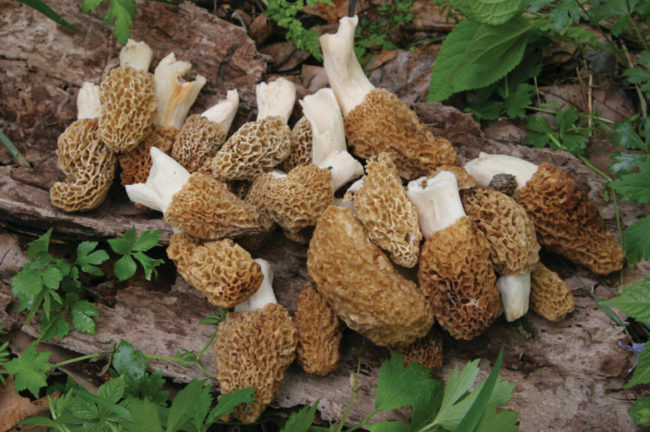
But then the mushrooms appeared in our yard. They were a windfall, a generous gift of nature and it felt ungracious to ignore them. Still, the first year they showed up I was less than adventurous. I dusted the morels with flour and fried them ’til crisp. Sprinkled with salt and pepper, I ate them hot. And, hey— they were good. Very, very good. No bar-menu, deep-fried mushrooms these!
But frying seemed to mask the woodsy flavor of the mushrooms. Our new asparagus beds were finally producing and it is a cliché, but a tasty one, that foods that grow at the same time in the garden work well together on the plate. So I sautéed morels in butter then added the fresh-picked asparagus, and cooked them together for just a few minutes. I served them salted and peppered, on hot buttered toast. It may be one of the simplest dishes I have ever eaten, and also one of the best—earthy, grassy, and sweet. If spring had a flavor, this was it. I was hooked.
And then, one year, the morels stopped coming up. I wandered the yard forlornly, picking aside decaying leaves and sticks, looking for hidden treasure, but to no avail. One spring I met a guy in our woods, with two little kids and a handgun tucked into his belt (for snakes, he told us), and I wondered if maybe quicker hands than mine were pick- ing our morels. But I think not. Nature, once so generous, was fickle, and the morels were no more.
I can buy them at the market, or at Bloomingfoods, and I do, sometimes, paying exorbitant prices for what once was freely given and gratefully received. Not surprisingly, though, they don’t taste the same.


